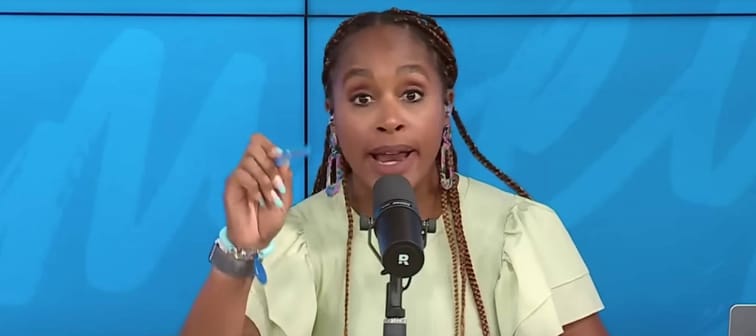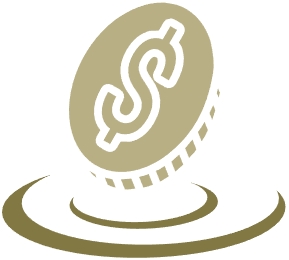“That’s a bunch of rubbish”: The Ramsey Show highlights the “painful” reality about Biden’s $39B credit card debt reliefThis is what it’s about and how you can safeguard yourself

President Joe Biden’s broad plan to forgive student loans program might be struck down through the Supreme Court, but his administration has moved ahead with a plan that will erase $39 billion of student loans.
The new policy affects around 804,000 borrowers who are on an income-driven payment (IDR) options for Federal student loan. If you have the IDR loan, borrowers who are eligible can pay a lower, income-pegged monthly amount for a 20- or 25-year period.
After twenty years (or greater) of making eligible payments so long as the borrower’s earnings remain less than the specified threshold and they continue to regularly renew their loan’s eligibility as IDR eligible — any balance that is not paid will be cancelled.
Biden’s plan for forgiveness, which was unveiled on July 14 is aimed at IDR customers who, as a result the result of “historical inaccuracies,” haven’t received enough credit for their all eligible payments.
However, what is the “painful” truth, as The Ramsey Show experts put it, is that these borrowers were still required to bear this burden and pay for between 20 and 25 years prior to hitting the final hurdle. And now, the government is offering an updated IDR program for students which could keep Americans trapped in debt for a lengthy period of.
The dangers of IDR plans
Any part of a long-standing loan may be suddenly gone is an exciting prospect, according to Jade Warshaw, a debt-elimination expert and contributor to The Ramsey Show.
“Finally, these folks are getting their money,” Warshaw stated in an earlier segment of the show that is a hit.
However, Warshaw added that both students who are currently and in the future should take a long, hard look about the consequences of dragging around debt from student loans for more than two years, with the possibility of receiving some relief at the end.
After a pause due to pandemics lasting over three and a half years Federal student loan payments are scheduled to resume in October and interest on loans will pick up in September. But, borrowers are given a 12 month ramp-up period, and all missed payments won’t be considered to be delinquent.
If you know that your debt could be paid off in the future it could be appealing to join one of four different IDR plans available today such as IBR (income-based Repayment (IBR) as well as ICR, Income-Contingent Repayment (ICR) as well as Pay as you Make (PAYE) as well as Saving for a Valued Education (SAVE).
The SAVE Loans, which is the latest version of IDR introduced through Biden administration Biden administration on August. 22nd, unpaid interest does not accrue. Those who have undergraduate loans will see their monthly payments cut from 10 percent to the 5% from their income discretionary. People with student and undergraduate loans will have to pay a weighted average of between 5% and 10% of earnings dependent on the original principal balances on their loans. Plus more.
However, with any IDR strategy, Warshaw said borrowers “kick that can down the road for 20, 25, 30 years,” and in the end, hope that there will get “a little bucket of gold at that rainbow.”
But what is the price?
The psychological toll of carrying debt repayments out
Today we have a better knowledge of the mental and emotional health effects of people owing money.
“It messes up your sleep, it messes up your relationships,” Warshaw’s co-host Dr. John Delony, a mental health specialist. The decision to extend the repayment of student loans over a long period is a decision of being “miserable and not be fully present,” the expert stated, as you will always are surrounded by a cloud of debt looming over you.
This also hinders those who earn a higher standard of living since earning more money could result in losing the ability to claim IDR.
All of this could trigger anxiety, depression and stress.
“Debt can make you feel anxious, especially if you don’t have support from friends or family or from your creditors,” according to the Mental Health Foundation.
“I know how it feels to not be able to sleep at night,” Warshaw stated. “I understand how it feels to feel that way about your marriage, how you function, all the decisions you make are made to pay your bills. It’s just a waste of time it’s not for birds.”
The debt snowball strategy
If you’re trying to survive In this situation, an IDR plan might seem like the most suitable option.
However, If you’re still paying back that student loan in your 50s, you’ve spent thousands more on interest than if you had been paying more monthly over a shorter time.
The Ramsey Show staff promotes the possibility of a solution for people with low incomes, namely The debt snowball technique. The idea is to repay your debts in a series from the least to the most expensive, regardless of interest rates. It is important to pay the maximum amount you can on the smallest debt until it’s completely paid off while also making the minimum payment for your other loans. Like a snowball, once you get rolling, you gain momentum.
Warshaw addressed her audience to not rely on the federal government, which might or refuse to help debt-ridden people and instead focus on making sure you are happy.
With this in mind the thing that brings peace and freedom is “you getting back control of your power, getting your independence back as well as being able to manage your finances by yourself instead of relying upon the state.
“I want you to be free, I know you can be free, I know you have the power inside yourself to be free,” she declared.









Leave a Reply